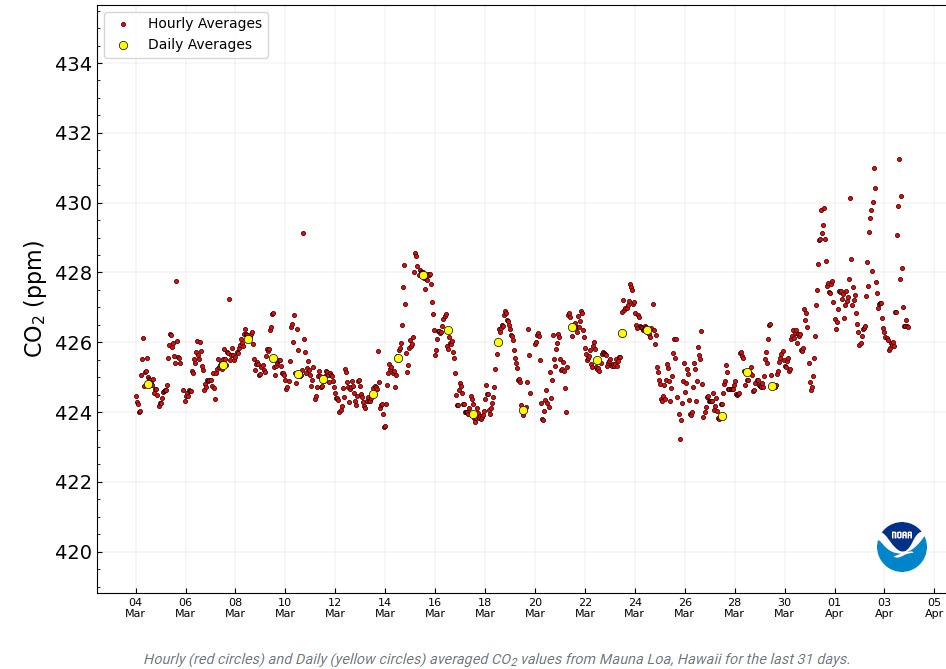Science
Related: About this forumIs the atmosphere momentarily too unstable to measure?
In analytical chemistry we have certain rules by which we test the validity of data, one being precision, which is the spread of data - the width of the spread - i.e. reproducibility over multiple measurements.
The Mauna Loa CO2 Observatory uses precision determinations to qualify its data; it's very high end analytical chemistry using a laser light absorbance technique known as "ring down spectroscopy." Over the last few days as of this writing, the daily measurements have been rated "unavailable" because of wide spreads in the data, with some hourly readings measuring over 430 ppm.
It's best to show this graphically from the website:

Recent Daily Average Mauna Loa CO2 (Accessed O4/04/2024)
A lack of precision can be instrumental, and often it is. There is a whole science of measurement designed to identify errors. However if one is analyzing an unstable system, precision can suffer because the variance in the data is real.
We are in new territory at the Mauna Loa CO2 Observatory; what I'm seeing there is blowing my mind. Over many years of accessing the data, I've never seen anything quite like 2024, as I noted here:
2024's Unprecedented Terror At the Mauna Loa CO2 Observatory Continues.
One hopes that the issue in these daily readings is instrumental and that it is not a function of real instability.
We'll see.
Since I joined DU in November 2002 I've been hearing, whenever climate issues are discussed, how a reactionary program of returning to the early 19th century in placing our energy sources dependent on the weather, so called "renewable energy" - precisely at the time we destabilized the weather with wishful thinking, selective attention, and soothsaying - the concentration of the dangerous fossil fuel waste carbon dioxide in the planetary atmosphere has risen by 52.08 ppm. In this century as a whole, beginning before I joined DU, the carbon dioxide concentrations have risen by 56.68 ppm. (These numbers are based on weekly averages at the Mauna Loa CO2 Observatory.)
While there is noise in the measurements on an hourly, daily, weekly, monthly and annual data, the analytical "rules" are designed to prevent inaccuracies inherent in owing to the methods themselves but clearly, the overall trends are surely real. We are not doing anything meaningful to address climate change other than jawboning insipidly.
That, at least, is an accurate statement.
erronis
(19,002 posts)I didn't read more than your OP, but I've previously wondered if our atmosphere is churning in ways not see before. Huge spikes in certain chemicals injected from a changing climate and direct human activities. And, of course, the global wind flows are changing - perhaps faster and less predictable than before.
Always enjoy reading your pieces and your views on energy production - pros and cons.